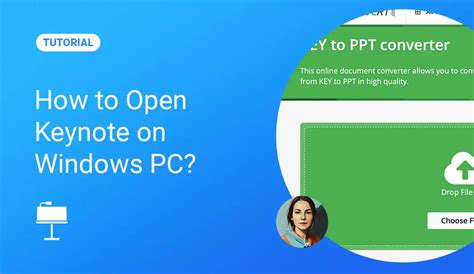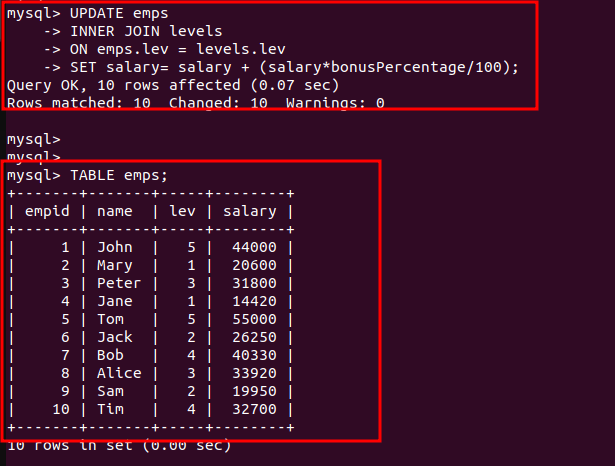Master the Art: Open Keynote on Your PC

For those who are accustomed to Apple's elegant presentation software, Keynote, the prospect of using a Windows PC may initially seem daunting. However, with the right tools and a bit of know-how, you can seamlessly unlock the potential of Keynote on your Windows-based machine. In this comprehensive guide, we will delve into the intricacies of using Keynote on a PC, offering a step-by-step approach to ensure a smooth transition and a productive experience.
Unveiling the Power of Keynote on Windows

Keynote, renowned for its intuitive interface and powerful presentation capabilities, has long been a favorite among Mac users. Yet, with the increasing popularity of cross-platform collaborations and the need for flexibility in today's digital world, many Windows users find themselves seeking a way to access this powerful tool. This article aims to bridge that gap, providing a detailed roadmap for those eager to harness the potential of Keynote on their Windows computers.
The Setup: Installing Keynote on Your PC

Before diving into the world of Keynote on Windows, it's crucial to ensure you have the right tools. Here's a step-by-step guide to getting started:
Step 1: Acquire the Necessary Software
To run Keynote on your Windows PC, you'll need to utilize a virtual machine software like VMware or VirtualBox. These tools allow you to create a virtual environment, essentially simulating a Mac OS within your Windows system.
- Download and install your chosen virtual machine software. Ensure you opt for the latest stable version to avoid potential compatibility issues.
- Next, you'll need to acquire a copy of the Mac OS. You can either purchase a licensed copy or explore other methods like using a trial version or alternative sources. It's important to note that using unlicensed software may pose legal and security risks.
Step 2: Setting Up the Virtual Machine
Once you have the necessary software, it's time to set up your virtual machine:
- Launch your virtual machine software and create a new virtual machine. Follow the guided setup process, selecting the Mac OS as your guest operating system.
- Assign an appropriate amount of RAM and processing power to your virtual machine. Keep in mind that running a virtual OS alongside your primary Windows OS will require additional resources.
- Mount the Mac OS installation media and begin the installation process. Follow the on-screen instructions to complete the installation.
Step 3: Installing Keynote
With your virtual Mac OS up and running, it's time to install Keynote:
- Log in to your Apple ID or create a new one if you don't have an account. This will be essential for accessing the App Store and downloading Keynote.
- Open the Mac App Store and search for "Keynote." Download and install the latest version of the software.
- Once installed, launch Keynote and familiarize yourself with its interface. You can now begin creating and editing presentations as you would on a Mac.
Maximizing Your Keynote Experience on Windows
Now that you've successfully installed Keynote on your Windows PC, it's time to delve into some tips and tricks to enhance your experience:
Synchronization and Collaboration
Keynote offers seamless synchronization across devices, allowing you to access your presentations from any device with an internet connection. Utilize cloud storage services like iCloud or Dropbox to ensure your work is always up-to-date and accessible.
Template Gallery
Explore the vast collection of templates available within Keynote. These pre-designed templates can serve as a great starting point for your presentations, saving you time and effort in designing from scratch.
Mastering Transitions and Animations
Keynote boasts a wide array of transition and animation effects that can add a professional touch to your presentations. Experiment with different options to find the perfect balance between visual appeal and clarity.
Collaborative Features
Keynote's collaborative features allow multiple users to work on the same presentation simultaneously. This can be especially useful for team projects, enabling efficient collaboration and real-time feedback.
Presentation Recording
Record your presentations within Keynote, complete with voiceover and slide transitions. This feature is particularly useful for creating video tutorials or sharing presentations with colleagues who may not have access to Keynote.
Exporting Options
Keynote offers a variety of export options, allowing you to share your presentations in different formats. You can export to PDF, PowerPoint, or even as a video file, ensuring compatibility with a wide range of devices and platforms.
Conclusion: Embracing the Power of Keynote
While the process of installing and using Keynote on a Windows PC may seem complex at first, with the right guidance and a bit of technical know-how, it becomes a seamless and empowering experience. Keynote's intuitive interface, coupled with its powerful features, offers a unique presentation experience that can enhance your professional or academic endeavors.
As you explore the capabilities of Keynote, remember that practice makes perfect. Experiment with different features, templates, and presentation styles to find your unique voice and create impactful presentations that leave a lasting impression.
Frequently Asked Questions

Can I use Keynote on Windows without a virtual machine?
+While it is technically possible to run Mac OS directly on Windows using tools like Hackintosh, it is not recommended for most users due to its complexity and potential legal issues. A safer and more stable approach is to use a virtual machine, which provides a well-defined environment for running Mac OS.
What are the system requirements for running Keynote on a virtual machine?
+The system requirements can vary depending on the virtual machine software and the version of Mac OS you are using. Generally, you will need a powerful processor, ample RAM (at least 8GB is recommended), and sufficient storage space. It’s also important to ensure your PC’s hardware is compatible with the virtualization technology.
How do I transfer my existing Keynote presentations to my Windows PC?
+You can easily transfer your Keynote presentations by saving them to a cloud storage service like iCloud or Dropbox. Once saved, you can access them from your Windows PC and open them in the Keynote app within your virtual machine.
Are there any alternatives to Keynote for Windows users?
+Yes, there are several presentation software alternatives available for Windows users. Some popular options include Microsoft PowerPoint, Google Slides, and Prezi. Each offers unique features and benefits, so it’s worth exploring to find the one that best suits your needs.
Can I collaborate with Mac users while using Keynote on Windows?
+Absolutely! Keynote’s collaboration features work seamlessly across platforms. As long as you and your collaborators are using the same version of Keynote, you can work together in real-time, regardless of whether you’re on a Mac or a Windows PC.



